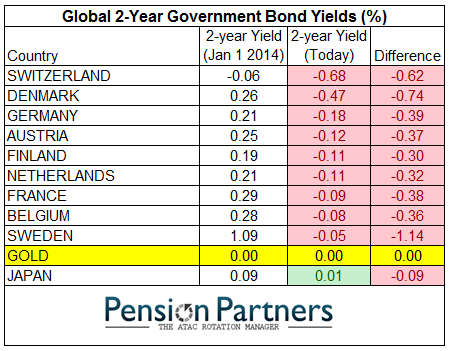For those of us who appreciate technical analysis, I have a chart this week that I find very interesting in its potential implications:
1) There was much greater risk of a reversal in bond prices for the next few months as prices tended to reverse at the highs of the channel.
2) The S&P 500 began to outperform long term bonds in the next months
3) The S&P 500 also rallied strongly in the months following
4) Two instances were at the bottom of bear market declines in the S&P 500 (2002 & 2009)
5) Two instances were after pullbacks in the S&P 500 during a longer term bull market (1998 & 2012)
So, here we are at another potential turn around in bond prices. The upper channel challenge has yet to decisively complete as bond prices are still elevated versus the trend. However, noting the historical precedent, the risk is high that bond prices do not have further to rise from here.
Coincidentally, we are also seeing breakouts in many global markets coinciding with this moment in bond prices.
From the five observations above, it makes one wonder whether we are about to see a strong bull run in stocks. The common assumption is that money from bonds flows into stocks, so with bond notes selling, stocks may get a boost.
Moreover, with central banks aggressively providing liquidity and bonds on the brink of becoming disfavored, once the upper trend challenge completes, stocks are the likely recipient of future buying.
Now, bonds may not continue to respect the past 20 years of price history and perform differently at this juncture than in the past. Moreover, stocks may outperform bonds, but also sell off. However, looking at historical precedent, I'd say the odds are in favor of the future rhyming with the past. If so, better buckle your seat belt for the bulls about to pump the gas...




